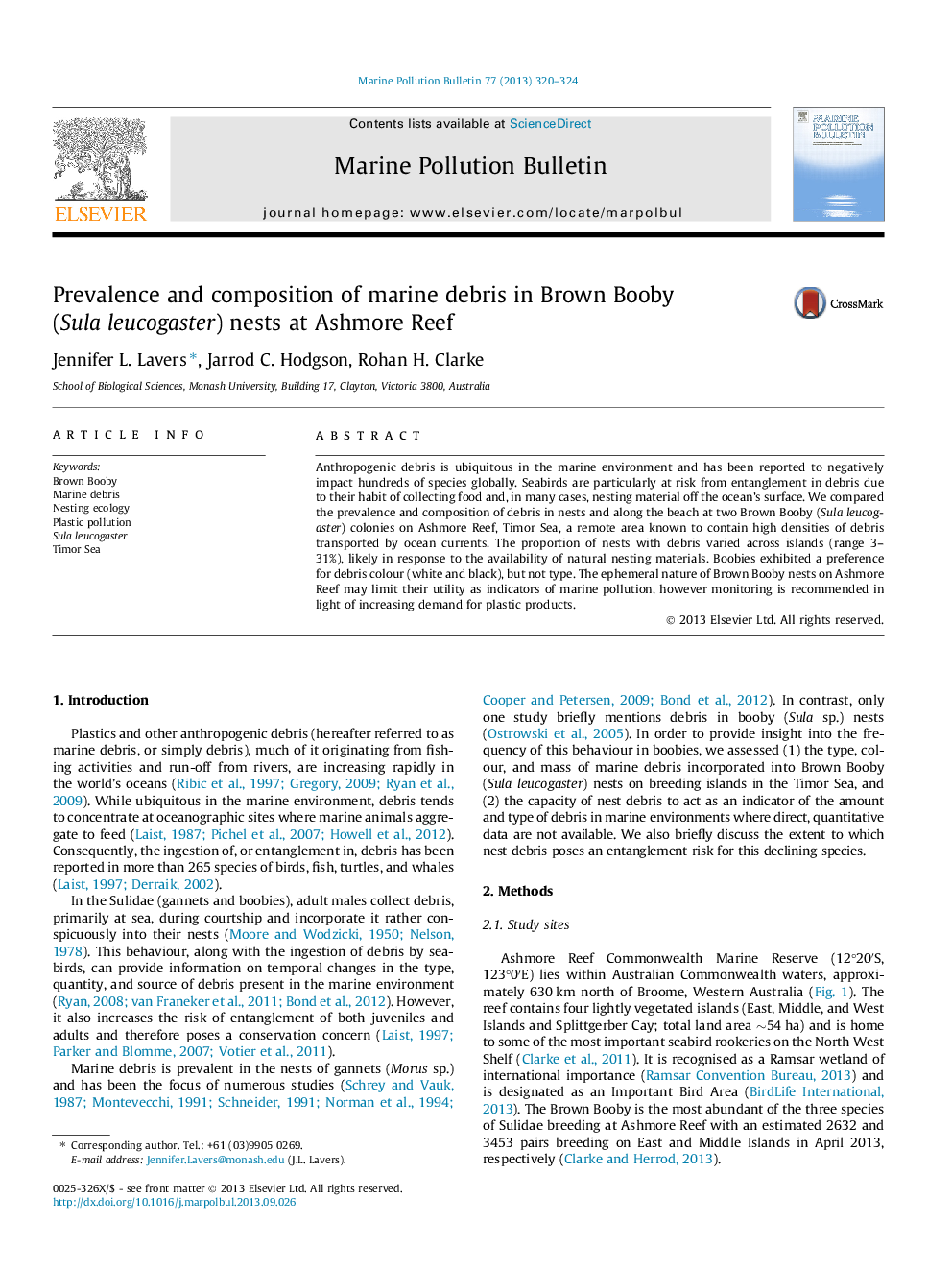| Article ID | Journal | Published Year | Pages | File Type |
|---|---|---|---|---|
| 6359337 | Marine Pollution Bulletin | 2013 | 5 Pages |
Abstract
Anthropogenic debris is ubiquitous in the marine environment and has been reported to negatively impact hundreds of species globally. Seabirds are particularly at risk from entanglement in debris due to their habit of collecting food and, in many cases, nesting material off the ocean's surface. We compared the prevalence and composition of debris in nests and along the beach at two Brown Booby (Sula leucogaster) colonies on Ashmore Reef, Timor Sea, a remote area known to contain high densities of debris transported by ocean currents. The proportion of nests with debris varied across islands (range 3-31%), likely in response to the availability of natural nesting materials. Boobies exhibited a preference for debris colour (white and black), but not type. The ephemeral nature of Brown Booby nests on Ashmore Reef may limit their utility as indicators of marine pollution, however monitoring is recommended in light of increasing demand for plastic products.
Related Topics
Physical Sciences and Engineering
Earth and Planetary Sciences
Oceanography
Authors
Jennifer L. Lavers, Jarrod C. Hodgson, Rohan H. Clarke,
